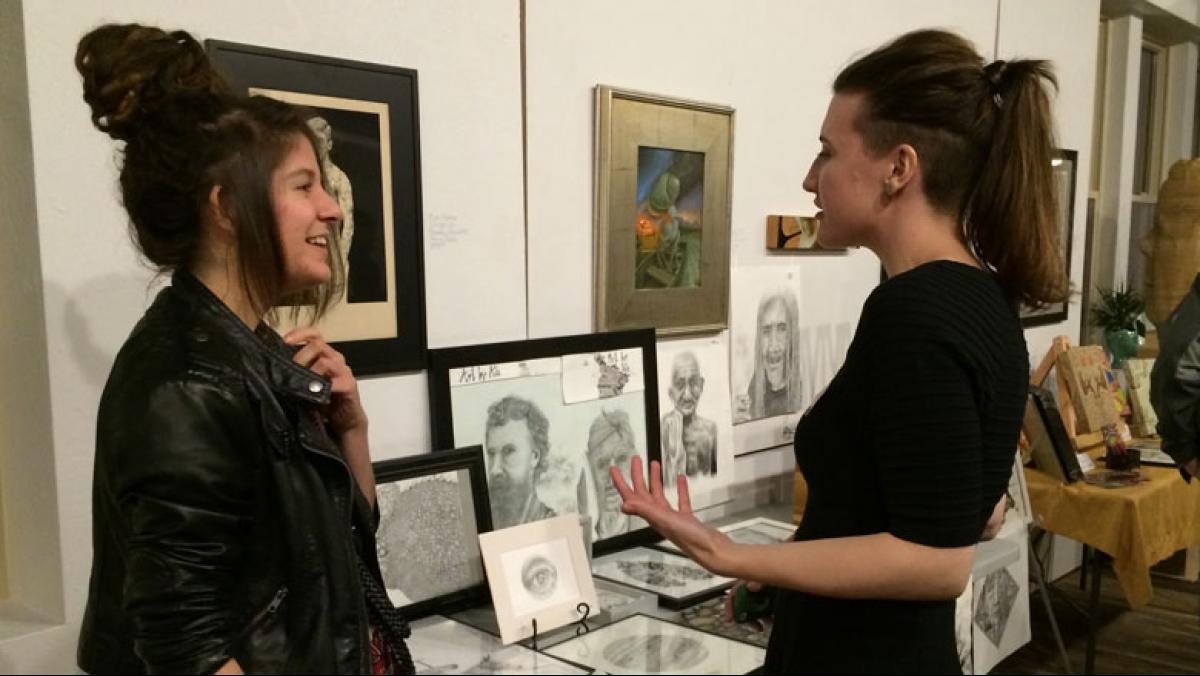When my friend Fanny Lau told me about it, I was intrigued by the simplicity of the concept. “It’s just like a vegetable CSA, but with art,” she said.
We were discussing the prospect of a new program in the Fox Cities based on the familiar CSA (community supported agriculture) template in which shareholders commit to a weekly purchase of seasonal, locally grown produce from area farms. The twist was that instead of delivering delicious veggies and supporting local farmers, our community supported art program would deliver fantastic artwork and support local artists.
Inspired by Minnesota’s Springboard for the Arts scalable CSA model, which has been replicated in more than thirty cities in North America over the past five years, we set to work building an arts-based CSA program for northeast Wisconsin. As our idea began to build momentum, Lau and I formed a team of excited volunteers to help us develop the program: Jamie Cartwright, Kate Mothes, Mariana Russell, and Cathy Stratton. “Support Community Artists, Collect Local Art” became our mantra. We even created a great name that connected the veggie CSA concept to artworks: ARTiculture.
Of course, running an arts-based CSA ended up being a bit more complicated in practice. Our goal was to recruit fifty shareholders who would invest in eight artists. At the end of the “season,” the shareholders would receive a wholesome “share” of six brand new pieces of art to hang in their homes, give as gifts, or trade with other shareholders. All membership proceeds go directly to the artists.
The Fox Cities has a wealth of artistic types, from professional painters whose work sells in galleries to talented amateurs who throw ceramic pieces for pleasure. We put out a call for art and assembled a jury of community leaders involved in the arts to evaluate the proposals and select the best—the most feasible projects, the highest quality pieces, the coolest stuff. Finalists had their art featured on our website where the community could vote for their favorites. From that online vote, ARTiculture selected the artists whose work would be included in the inaugural season.
We let the artists determine whether they would produce fifty works for a full share or twenty-five for a half share, depending on their medium. Of the eight artists selected by the community, four produced fifty works and the other four produced twenty-five, guaranteeing six pieces for each of the fifty shares and ensuring both variety and an element of surprise for shareholders.
For example, last season Appleton-based artist C. E. Brady created a full share of hand-pressed and numbered woodcut prints titled Sturgeon Thunder that feature a stylized fish framed by a wolf and a fox, references to two regional rivers where sturgeon spawn and create the annual “thunder.” Oshkosh-based artist Melissa Siewert’s half share consisted of cast and glazed ceramic vases in the form a human head, each with just the right amount of individuality. (When you sign up for a veggie CSA you’re never really sure what the growing season will bring, so a little bit of uncertainty is inherent in the process—why not with the art CSA, too?)
Because of ARTiculture’s similarity to a veggie CSA, we often found ourselves using tomatoes as a metaphor for artworks in conversations with prospective shareholders, jurors, and artists, as in “half the shares will get Romas and half will get Early Girls” or “every share will get at least one heirloom variety,” when we were really talking about paintings and prints and sculptures.
But even an appealing comparison like fresh summer produce only gets us so far in describing the concept behind our CSA program. A large part of the work of the ARTiculture team is to convince people that support for artists is a key part of a robust, productive community.
ARTiculture artists use income from the sales of shares in myriad ways. Former Fox Cities artist Cori Lin used her funds to purchase printmaking paper, rent time to use a printing press, and even learn a new printmaking technique at the Minnesota Center for Book Arts. With the financial support generated through the ARTiculture program, Cori produced fifty prints featuring local fauna like snapping turtles, one for each CSA share.
But the support ARTiculture provided to the artists was often more than just financial; Appleton-based artist Mariana Russell found that producing her abstract mixed media pieces for ARTiculture’s first season motivated her to commit more fully to her art practice. Russell says she also developed a stronger connection her to the growing arts community in the Fox Cities and Northeast Wisconsin.
ARTiculture’s first shareholder pick up event was held in December 2015 at The Draw, a new creative economy workspace on the Fox River in Appleton. The participating artists were there to meet shareholders and sell additional pieces. With some shares from the 2015 season still unsold, ARTiculture continues to hold events in the Fox Cities to promote the artists and the art CSA concept—which grows every time someone explains, “it’s just like a vegetable CSA, but with art.”
Much like a traditional CSA encourages potential shareholders to cook with unfamiliar produce items (what can I do with these kohlrabi?), ARTiculture encourages people to engage with different types of art (how do I enjoy this abstract painting?) by helping them develop or expand their taste for it. Through ARTiculture, even folks who frequent museums and galleries discover new artists that challenge, surprise, and excite.




